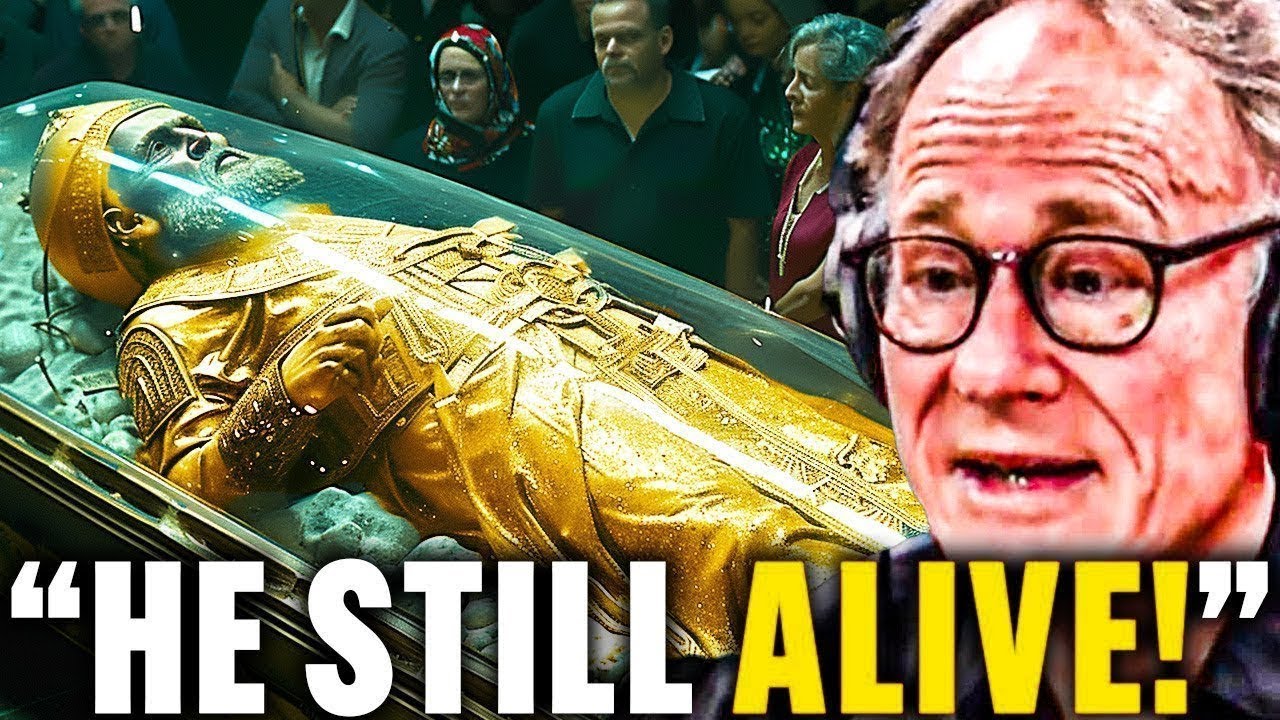🚨 “He’s Still Alive and Kicking!” – Scientists unearth the LAST Anunnaki King in a hidden tomb, pulsing with eerie life in stasis—now they’re TERRIFIED of what awakens! 👽😱 Ancient alien overlord’s return could doom us all… Uncover the forbidden footage before it’s sealed forever! 🔍🛸

Sensational claims have surged online asserting that scientists recently discovered the “last Anunnaki king” inside an ancient tomb, allegedly still alive in a stasis chamber, prompting widespread fear among researchers. Videos circulating on platforms like YouTube and Facebook, often titled “Scientists Discovered The Last Anunnaki King Inside A Tomb And They Are Scared,” describe a colossal figure—linked to Mesopotamian mythology—found in Iraq or Iran, with some narratives suggesting the entity is preserved in suspended animation, ready to “awaken” and reshape human destiny. These stories tie into broader conspiracy theories popularized by figures like Zecharia Sitchin, who portrayed the Anunnaki as extraterrestrial beings from the planet Nibiru who engineered humanity as slaves. However, archaeologists, historians, and experts unanimously dismiss these assertions as fabrications blending myth with pseudoscience, with no credible evidence supporting such a find.
The Anunnaki originate from ancient Sumerian, Akkadian, Assyrian, and Babylonian texts dating back to the Post-Akkadian period around 2300 BCE, where they are depicted as a pantheon of deities descended from the sky god An and earth goddess Ki. Their primary role was to decree human fates in a divine assembly, with prominent members including Enlil (god of air and chief deity), Enki (god of wisdom and water), and Ninhursag (mother goddess). No Sumerian writings describe them as aliens or kings in stasis; instead, they functioned metaphorically in myths like the Enûma Eliš, where gods create humans from clay and divine blood to labor for them—a common motif in ancient Near Eastern lore, not literal genetic engineering. Archaeological evidence shows individual cults for Anunnaki deities in cities like Uruk and Nippur, but no collective worship or depictions of them as a unified group of extraterrestrials.
Modern conspiracy narratives trace to Sitchin’s 1976 book “The 12th Planet,” where he misinterpreted cuneiform tablets to claim the Anunnaki arrived 450,000 years ago from Nibiru to mine gold, creating Homo sapiens via DNA splicing. Sitchin’s translations, lacking peer review, were debunked by Assyriologists for errors like fabricating “Nibiru” as a planet (it’s actually a star or Jupiter in texts) and twisting “Anunnaki” (meaning “princely offspring”) to imply “those who from heaven came.” Later proponents, including David Icke, fused this with reptilian conspiracies, alleging Anunnaki shape-shifters control world governments. Viral videos amplify these tales, often citing unverified “discoveries” like a 12,000-year-old intact giant in Iran or Iraq, but these stem from hoaxes, such as a 2016 Before It’s News post about a Kurdish find later contradicted by authorities dating ruins to 850 years old.
Specific claims of a “last Anunnaki king” often invoke Gilgamesh, the semi-mythical Sumerian ruler of Uruk immortalized in the Epic of Gilgamesh (circa 2100 BCE), who sought eternal life but failed. A 2003 BBC report hyped a potential tomb in the dried Euphrates bed near Uruk, matching Gilgamesh’s description of a massive structure, but excavations revealed no body or artifacts confirming the legend— just ancient architecture. Conspiracy sites twist this into Anunnaki links, claiming giants or stasis tech, but experts like those on Reddit’s r/AskArchaeology confirm it’s unsubstantiated; no peer-reviewed papers support it. Iranian tomb rumors, like a 12,000-year-old giant, were debunked as misdated ruins, with Islamic authorities correcting exaggerated ages to suppress pseudoscience.
YouTube channels like “Life’s Biggest Questions” fuel the hysteria with dramatized videos, blending real archaeology (e.g., Mesopotamian tombs) with fiction, amassing views through clickbait. Social media posts, including recent X shares, promote these as “leaked” truths, but lack verifiable sources—no photos, DNA evidence, or scientific announcements exist. Quora users and skeptics demand peer-reviewed evidence, which never materializes, highlighting the stories’ reliance on anonymous “whistleblowers.”
Why do these tales persist? Post-9/11 distrust, amplified by shows like “Ancient Aliens,” merges genuine Mesopotamian wonders—ziggurats, cuneiform—with sci-fi. Sitchin’s influence endures despite critiques from scholars like Michael S. Heiser, who exposed linguistic flaws. Real archaeology in Iraq faces challenges: war damage to sites like Ur, looting, and restricted access prevent such “discoveries.” No stasis tech or living kings have been found; human remains in tombs, like those from the Royal Tombs of Ur (2600 BCE), show elite burials with gold and lapis, not aliens.
The fear-mongering—”scientists are scared”—plays on existential dread, echoing Icke’s reptilian overlords or 2012 doomsday hype tied to Mayan-Anunnaki crossovers. Yet, Sumerian texts reveal human innovation: the wheel, writing, and city-states built by our ancestors, not extraterrestrials. Projects digitizing cuneiform, like the Electronic Text Corpus of Sumerian Literature, confirm mythological, not historical, Anunnaki. As experts urge, rely on verified sources; the “last king” is pure fiction, a modern myth scaring viewers for clicks, not uncovering cosmic threats. True history’s wonders need no aliens to awe.





